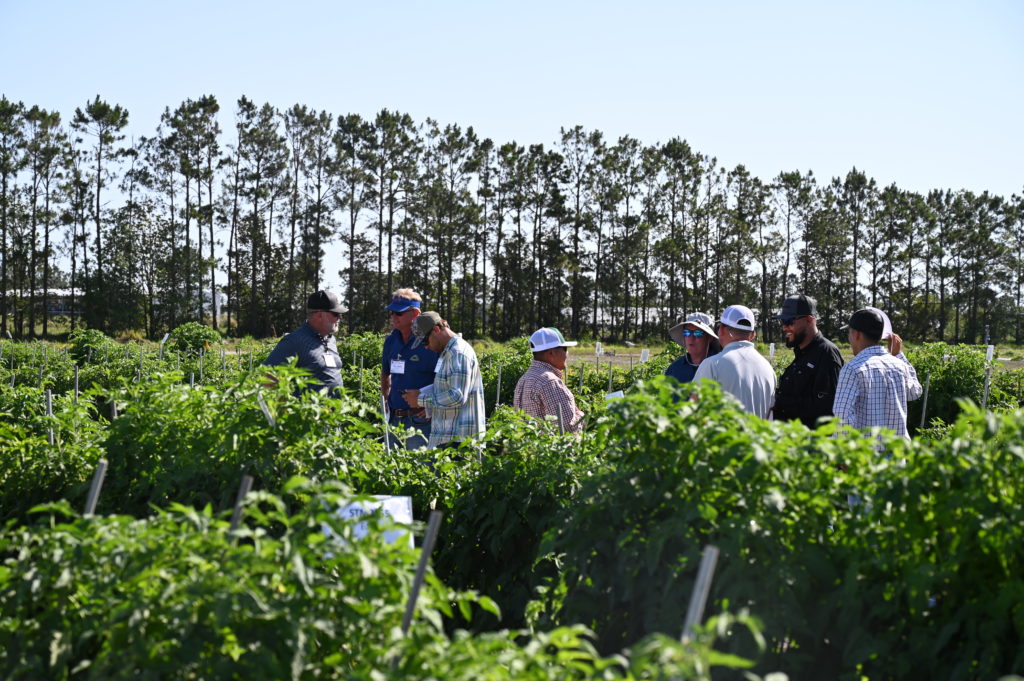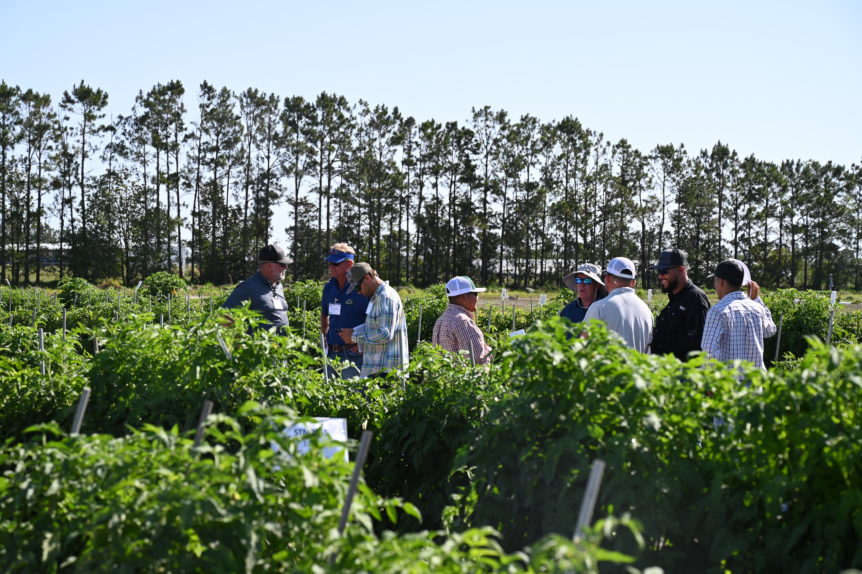
By Frank Giles
In mid-May, the University of Florida Institute of Food and Agricultural Sciences (UF/IFAS) Gulf Coast Research and Education Center hosted a tomato field day to showcase research being conducted at the facility.
The event was well attended, filling up several wagon loads of people who made their way through six field stops that focused on nematodes, tomato breeding, fertilizer recommendations, disease management and weed control.
New Nematode
Johan Desaeger, UF/IFAS nematologist, discussed his research on nematode management. Fumigation and other nematicides remain an important means of managing nematodes in crops. He said planting cover crops in the fallow period is becoming a more popular practice. Sunn hemp and sorghum-sudangrass are good cover crops for tomatoes.
Desaeger cautioned about the guava root-knot nematode (Meloidogyne enterolobii), which is a newer species in the area. It is the most damaging root-knot nematode in the world. Existing disease-resistant tomato varieties do not appear to have good resistance to this nematode.
CRISPR Tomato
Jessica Chitwood-Brown, UF/IFAS tomato breeder, hosted two stops highlighting new varieties in development. One stop featured work to develop bacterial spot-resistant lines and hybrids. She said she’s excited about the Bs5 gene, which has been shown to produce good resistance to bacterial spot when edited with CRISPR technology. As breeding perfects the must-haves like yield and quality, Bs5 hybrid availability could only be a matter of years away for growers.
Fertilizer Research
Shinsuke Agehara, UF/IFAS horticulture associate professor, hosted a tour stop on work to update fertilizer recommendations for tomatoes, especially for nitrogen and phosphorus. This is part of a larger research effort to update fertilizer recommendations for multiple crops to serve as guidance for Florida’s best management practices program.
Part of the research project focuses on fine-tuning the rate and placement of controlled-release nitrogen to enhance tomato yields while minimizing environmental impacts. Controlled-release nitrogen can be applied via soil incorporation or banded applications.
The current recommended nitrogen rate for tomatoes is 200 pounds per acre, but Agehara noted that key questions persist regarding the optimal rate and placement of the nutrient.
Tracking Disease
Gary Vallad, UF/IFAS professor of plant pathology, showed an elaborate experiment aimed at tracking the movement of bacterial spot aerosols in fields. He and his team have created 3D-printed vacuums that suck up the air in and around a tomato plot to see how far disease spores can move. These particles can remain suspended in the air for long periods of time.
He said the idea is to gain a better understanding of what causes the disease to spread and how far it will go. For example, when growers spray their tomato crops with booms under pressure, is that moving the disease to new locations? Vallad’s experiment indicates that does occur. Even before spraying occurred, bacterial spot aerosols were collected by the vacuums. Then, when the actual applications were made (at 200 pounds per square inch of pressure), high amounts of bacterial spot spores were collected. Post-spray collection of bacterial spot indicates that enough of the aerosols were disturbed so that potential spread to other fields could occur.
While bacterial spot is considered one of the most important tomato diseases, this research could be applied to other diseases as well. This knowledge could better inform growers about types of sprays being applied and under what pressure.
Fighting Weeds
The final tour stop featured weeds and the work of Nathan Boyd, UF/IFAS weed scientist. Attendees were shown fumigation treatment plots that have had the same treatments for the past seven years. Boyd said the most cost-effective treatment in this experiment has been Pic-Clor 60 plus KPAM.










